The mating season for ducks typically occurs during springtime. During this time, male ducks will begin to court female ducks in an attempt to win their favor.
But how exactly do ducks mate?
Duck mating begins with courtship behaviors that may include vocalizations, physical displays, and even aerial acrobatics. Once a female duck chooses a mate, the male will mount the female from behind, aligning their cloacas (reproductive organs) to transfer sperm.
This process, known as ‘cloacal kissing,’ is usually quick. After mating, the male will often exhibit a behavior known as the ‘post-copulatory display,’ which includes vocalizations and specific movements to show off his successful mating.
Key Takeaways on How Ducks Mate
- If a male duck is successful in winning over a female, the pair will then mate. The actual act of mating between ducks is often violent and forceful, with the male duck grabbing hold of the female’s neck in order to mount her.
- After copulation has occurred, the pair will stay together throughout the breeding season and will then go their separate ways.
- It is important to note that ducks are not monogamous creatures and will often mate with multiple partners over the course of their lifetime.
How Exactly Do Male Ducks and Female Ducks Mate?
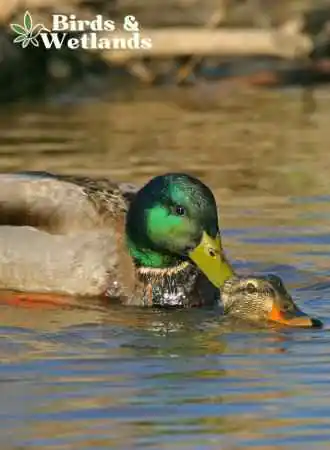
Most birds in the animal kingdom engage in external fertilization but this is more common in ducks. Their unique sex organs which are different from other species, allow for a higher rate of successful sperm transfer.
During mating season, ducks can become aggressive. If male ducks try to force a female duck to mate with them, their rate of successful sperm transfer can be very low.
External fertilization occurs when the male duck deposits his sperm on the outside of the female’s body, near her cloaca (the vent through which she eliminates waste and eggs). Females then use their muscles to draw the sperm inside, where it fertilizes their eggs.
The process of external fertilization is risky for both the male and female ducks, as there is a chance that the sperm will be washed away before it has a chance to fertilize the eggs. If the females are not willing to mate, they can use their muscules to prevent the male’s sperm from entering her body.
Male ducks or drakes have a corkscrew-shaped duck penis or phallus which they use to transfer sperm into the female’s tract. A drake’s manhood is hidden internally and only comes out during copulation.
The female’s canal is much more intricate. Females have developed a method to prevent unwanted fertilization. They have the ability to expel unwanted sperm during forced copulation. This complexity ensures that the females choose who fertilizes their eggs.
Despite the risks, external fertilization is advantageous for ducks because it allows them to mate with multiple partners and increases the chances that their offspring will inherit genes from a diverse pool of parents. This diversity helps to ensure the survival of the species.
How Long Can the Female Duck Store Sperm After Mating?
Female ducks can hold sperm for 10 days to 2 weeks in their sperm storage tubules. These tubules in the female duck’s body are located near the junction of the shell gland and are lined with simple columnar epithelium.
Ducks deposit sperm into these glands during copulation, and the sperm are then stored until they are needed for fertilization. The length of time that the sperm can be stored varies depending on the species of duck, but most can hold sperm for at least 10 days.
This allows the female to control when she will become fertilized, and ensures that she will only become fertilized by a male through consensual mating. Once the mother duck chooses which male sperm she wanted, she will begin laying fertilized eggs shortly thereafter. These eggs hatch into baby ducks or ducklings.
Do Ducks Mate in the Water or on Land?

Ducks prefer to mate in water, but they may also do so on land. Ducks typically mate in the water because it provides a more stable surface for them to copulate. The water helps to support the weight of the male duck, which can be up to twice the weight of the female.
If there is no water available or if the water is too cold, ducks will mate on land. The female will typically lie on her back while the male mounts her.
Can Female Ducks Drown While Mating With Males in the Water?
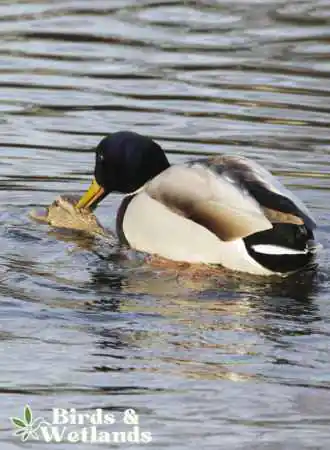
The short answer is yes, female ducks can drown while mating with males in the water.
The act of copulation often forces the female underwater while the male duck gives out a loud whistle and grabs the female duck’s neck, where she may succumb to the weight of the male or simply drown. Drowning of the female can also happen when several males are trying to mate with the same female duck.
While this may seem like a cruel way for nature to work, it’s actually not that uncommon. In many animal species, the males are larger and more aggressive than the females, and this is especially true of ducks. Male ducks are known to be quite violent with each other and with female ducks, often engaging in forced copulation.
For the female duck, mating can be a dangerous affair. When the male mounts her, his weight can push her underwater, where she may drown. Even if she survives the initial mating, she may be left with a leg injury, making her more vulnerable to predators.
How Do Ducks Select Their Mate?
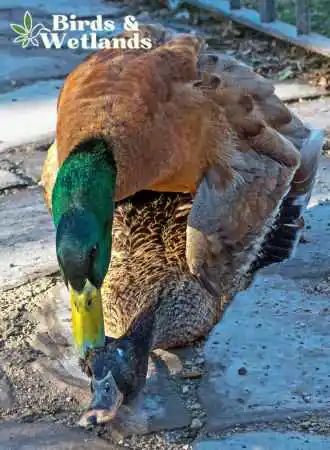
Different waterfowl species engage in different mating and courtship displays. Moreover, mating rituals can vary depending on the duck species and their habitat. For instance, domesticated ducks don’t follow the same mating patterns and mating behaviors with that as wild ducks.
The duck courtship process between two ducks is pretty interesting. The selection process usually begins on the wintering grounds, just right before their spring migration. The males will show off their colors to attract females.
They do this by puffing out their chest and spreading their tail feathers. Next, they’ll do a little dance that involves moving back and forth, as well as bowing their heads. During this time, they’ll also make a special call that’s only used during courtship.
The female will watch all of this and decide if she’s interested in the male or not. If she is, she’ll allow him to approach her and they’ll begin the duck mating process. If she’s not interested, she’ll swim away and the male will have to move on to another potential mate.
Do Ducks Mate for Life?
Unlike geese, ducks do not mate for life. Instead, they form seasonal bonds, which means they establish a new bond with a different duck each season. This is because ducks generally only mate during their breeding period, which occurs once per year.
Where the male geese help the female geese raise their young, male and female ducks will go on their separate ways after the breeding period.
Male ducks typically mate with six to eight different females during the breeding period. However, this number can vary depending on the species of duck and their location
When winter arrives, ducks must find a new mate and create a new bond. The male duck will defend the area around the female duck he is bonded with to prevent other males from getting close to her
If the male duck dies during spring migration, the female will quickly find a new mate for that season. Seasonal monogamy is common among different duck species including diving ducks, sea ducks and dabbling ducks.
Are Ducks Monogamous?
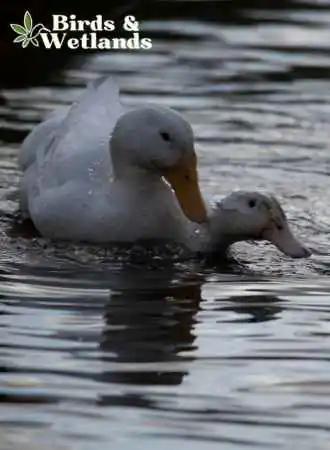
Ducks typically only mate with a single duck per season, forming seasonal bonds instead of traditional lifelong monogamous bonds. This means that they only stay together for the duration of the breeding season and return to their own separate nesting grounds when it is over.
Ducks don’t typically form long-term pair bonds, but the mated pairs will stay together for the duration of the breeding season. They will mate with other birds throughout their lives. Males, in particular, will mate with several females.
At What Age Can Ducks Start Mating?
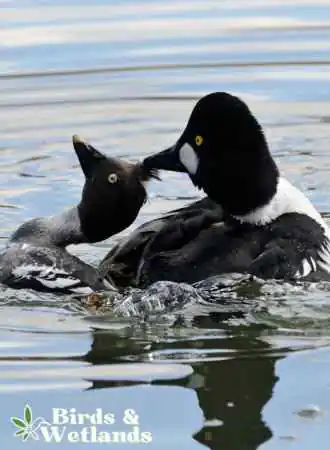
Ducks typically reach sexual maturity around four months of age, though they may start mating as early as three months old or as late as six months old. This means that they may begin to mate even before they start laying eggs. The age at which ducks begin mating can vary depending on the species and the individual duck.

